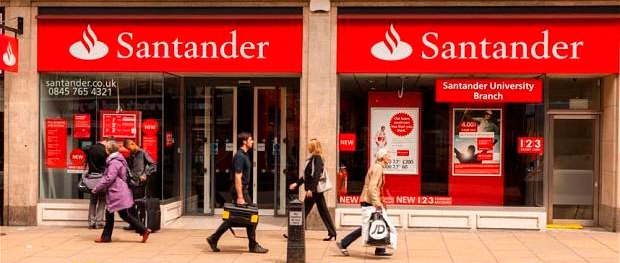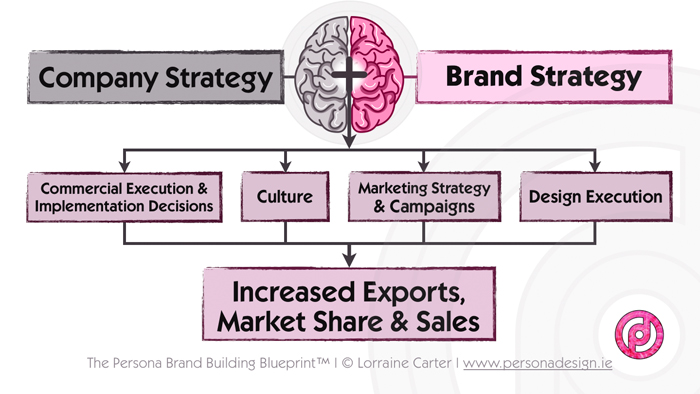
6 Ways to Develop and Nurture a Successful Brand Culture With a Limited Budget
Brand culture is a system of shared values and beliefs that determine what people think, feel, say and do, both within an organisation and externally amongst customers. It’s the summation of your purpose, vision, mission, values, tone-of-voice, personality and behavioural attributes. The promise you make to meet your customers expectations in certain ways. The manner in which your people interact amongst themselves and the collection of experiences your customers have everytime they interact with your brand through your products, your services and the people that represent and champion your brand.
When you have all these factors well defined and articulated you have absolute clarity on what culture means in the context of your brand and organisation so from the ground up you can cultivate a strong, positive brand culture that your people and customers believe in. It also enables you to better manage how you are perceived internally and externally. This matters even more when you’re operating under increased pressure, in hostile trading conditions or when a large proportion of your team are working remotely.
Related: Branding Psychology in Adversity – 7 Ways You Can Embrace Behavioural Shifts to Grow Your Business
This in turn underpins your ability to command a premium, attract and retain your ideal customers, increase productivity, nurture innovation and creativity, establish and maintain operational efficiency and consistency, motivate and energize employees, drive growth and increase sales. It also has a significant impact on your ability to attract and retain your top talent — all of which has a massive impact on your bottom line.
We all have a sense of what culture is because we’ve experienced it in both good and bad forms through organisations or products and services we’ve engaged with. The truth is, a strong positive brand culture doesn’t happen or come into being by accident. It’s developed with conscious and considered input at leadership level.
It’s something that needs to be proactively nurtured because it’s the embodiment of how people work together to bring the brand alive positively for themselves and customers. Every person in an organisation from leadership to general staff has a role in creating and nurturing the culture of an organisation.
Brand culture can be notoriously difficult to get right, particularly if you’re going through a transformation or change process, so it’s best developed with a systemised approach because this ensures nothing is left to chance.
A systemised methodology enables you to identify, define and develop each element required to map out the desired culture of a brand or organisation so you can measure impact, achieve your objectives and get it right.
We use the Persona Brand Building Blueprint™ because it’s a proven robust system that gets very effective results regardless of the sector or vertical in which an organisation or brand operates. The implementation, application and embedding process to effect ongoing change then comes after the mapping or brand profiling process is completed. So now is your opportunity to reevaluate where you’re at in the context of developing and nurturing your brand culture to build your long term success.
Discover Top 6 Ways to Develop and Nurture Your Brand Culture Successfully With Limited Resources
1. Be Clear What Your Brand Culture Is
First things first: to develop your brand culture, you first need to know what you want it to be. What’s your bigger purpose behind what you do, what role do you fulfil in society, the reasons beyond the money? Purpose is the driver of brand culture and culture is the engine behind organisation results — it’s fundamental to business longevity and organizational success so critical to get right.
Related: Top 5 Reasons Why Brand Purpose is The Essential Growth Driver in a Fast Changing World
In the early years of a young business there can be so much focus on growth that brand culture is sometimes an afterthought or something put off until later. A lot of businesses and brands emerge without really thinking about what their brand strategy or brand culture is. But to develop and nurture a great brand culture, you first need to be clear about what it is and the brand strategy underpinning it. The later you do this, the more work it can take to get it right because it is harder to change something as it gets bigger, in fact it can take years to effect lasting culture change.
Related: Brand Promises, How to Craft, Articulate and Live Them for Brand Success
This does not necessarily mean that you need to invent a brand culture. Even if you do not have an articulated brand culture already, most brands are built around some elements which you can tease out to establish an outline of the culture. Think about the sorts of attributes your employees show at work. Think about what customers say about your brand and the mood of your warehouse, office, website or other touchpoints and spaces. These will all give you some clues about how your brand culture could look and feel.
We know that sometimes it’s a struggle to build a brand strategy and brand culture that really engages your ideal customers effectively, particularly in adversity, so we’ve developed three different ways of working with us to help you build your brand and culture, depending on your preferences, so if you’d like us to:
- Build your brand for you – find out more here or get in touch [email protected] or ring +353 1 8322724
- Empower you to build your brand – check out the Persona Brand Building Blueprint™ Mastermind here. This is a live, interactive programme online where you work on your brand with us codifying and mapping out your brand strategy for business growth. Alternatively, join our online half-day Branding Accelerator Masterclass for a fast-injection of brand building essentials. Ask about our Personal and Corporate Leadership Brand Alignment Masterclass
- Want a DIY solution? check out our how to build a brand eprogramme here and our how to audit your brand yourself eprogramme here
2. Be Willing to Develop Your Brand Culture Over Time
Some brands feel as if they have been around for ages. You may remember them from your childhood, or your first job. When you look at old adverts for those brands, you get a sense of the culture behind the brand. There are often some things which have remained unchanged – but other things which have moved with the times, even if you hadn’t realized it before.

Image via Likesharetweet © Heinz
Some brands have been around for a very long time, but that does not mean that their brand culture has been the same throughout even if the brand name is unchanged. Like human beings, brands evolve over time and even more importantly, parts of what they stand for – such as their brand culture – can change.
Re-evaluating your brand culture regularly in the form of a brand audit health check to see if it is still fit for purpose is an important part of developing and managing your most valuable asset — your brand. A brand audit health check enables you to maintain relevance, be fit for purpose, identify your strengths, weaknesses and opportunities for growth — help you to future proof your business.
Parts or all of your brand strategy may be reaffirmed to still be relevant and exciting. Other parts may be in need of some evolutionary adjustment in the form of a brand refresh, or perhaps a more dramatic overhaul, a rebrand. That can be not only because the brand has changed, but also because the world around it has changed. For example, consumption patterns may have changed from previous years or the competitive landscape may have shifted.

Image via Telegraph © Burberry
An example is the iconic clothing house Burberry. Their brand image had been suffering and their brand culture felt dated. Under the creative direction of Christopher Bailey and business leadership of Angela Ahrendts, the brand culture was brought up to date while keeping the essence of the brand intact.
Related: Redefining Your Brand Culture After a Rebrand, Sale or Merger
3. Bring Your Brand Culture to Life – Without Breaking the Bank
In popular conversation the word ‘culture’ refers to things like the visual arts, performance, entertainment and different geographic or ethnicities around the world. Culture thrives on good open, clear communication, ideally appealing to multiple different sensory factors.
A brand culture which lives only in a document adds little or no value to a company or the bottom line. In fact, an organisation with no well developed brand strategy or brand culture rarely performs optimally or delivers financially to its full potential.
To really take root and become the living embodiment of a business, brand culture needs to be part of the very fabric of the organisation engaging leaders and employees throughout. Everything from onboarding, communications, development, training and learning journeys, customer experience, customer journeys, design application, marketing campaigns, sales scripts, language, incentives and reward, innovation and creativity, product hierarchies or brand architecture – how products and services are developed and delivered is influenced by, and takes its direction from, your brand strategy and brand culture.
The good news is that it does not have to be a huge investment and in some cases can be done effectively with lean resources. The results of so many participants of the Persona 7-Figure Business Building & Brand Strategy Mastermind is evidence to this alone.
Bring your brand culture alive through storytelling, rewarding everyday examples of brand culture in action amongst your team and customers and tracking measurable progress. Consider the physical environment in which you operate and shape it to reflect the personality of your brand, share your brand values creatively on your walls, define your optimal brand culture behaviours and make them part of everything you do every day.
Consider your communications on and offline, be that through your social channels, video campaigns, music, website, brochures and packaging. With some careful thought and consideration, brand culture can be brought to life widely and often without excessive expenditure in smaller businesses.

© MGI Learning
If you’re considering embedding your brand culture into your organisation then perhaps talk to MGI Learning. This is a very successful learning and development business founded in the UK over 20 years ago that went through its own transformation process with Persona Design a couple of years ago in the form of a brand refresh. Working with clients globally they’ve enabled organisations to transform their brand culture through building collaborative, co-creative, positive, high trust cultures.

© MGI Learning
Their founding premise is that “everything you think, feel, say and do is either a service or a disservice to yourself and everyone around you” because culture is played out by what people say and do every day. In fact, they have a world renowned IP for truly embedding culture change which is evidenced multiple times over in the metrics their customers have achieved after engaging in the MGI culture embedding process. Their IP is the envy of many competitors because few can touch the rigorousness of the MGI systems and the impact they have throughout the organisations they work with from senior leaders to general staff.
For a customer facing company, its people are often the physical embodiment of its brand culture. Choosing the right people, training them well to become your brand champions with effective embedding of learning and giving them the tools to perform is one of your most powerful ways to bring your brand culture to life and enhance your customer experience.
Related: How to Use Brand Values to Drive Unwavering Customer Trust and Commitment
A case study of bringing brand culture to life at little cost is the innovation consultancy ?What If!. They used to be passionate about their brand values, painting them on their office walls. Employees and visitors could post a story next to a value detailing something an employee had done which showed the values in action. Each month an award would be given to one such nominee at a company huddle. This is an inexpensive and fun way to get people thinking about their brand culture every day, passing its manifestation multiple times a day on the office stairwell.
Are you a business leader, manager or entrepreneur who wants to re-evaluate or build your brand strategy so you can develop and nurture your brand culture to increase your sales? Are you curious about how to build or scale a highly successful standout brand that’s unstoppable in uncertainty? Join one of our branding masterclasses because they empower you to build your brand, enhance customer experience, expand your market impact and create higher perceived value so you can command a premium.
In fact, the Persona Brand Building Blueprint™ Mastermind is all about fast-tracking you, your brand and your business through the brand building, agile branding strategy process using professional big-brand know-how with proven systems that get results so you can develop your brand culture and grow your business faster and more effectively.
The programme enables you to make your brand highly visible, different, credible, trustworthy, memorable and much loved amongst your ideal customers so you can become more profitable and leave your competitors way behind. Be The One — your ideal customers’ favourite brand of preferred choice commanding a premium.
If you want a tailor-made solution specifically for your brand then we also provide inhouse bespoke Persona Brand Building Blueprint™ Intensives working with you and your team so you can grow your business faster and more profitably. Contact us to discover more [email protected] or +353 1 8322724

© Persona Design
4. Get Your Brand Culture Out In the Market
One of the mistakes some businesses make is thinking that brand culture is an internal phenomenon alone. In fact, a great brand culture powers the organisation and brand forward and makes it more appealing, not only internally, but also to a wide range of external stakeholders. To that end, your brand culture should not be hidden under a bushel, but broadcast loud and clear. A strong brand culture should help differentiate you, enable you to be highly visible, credible, trustworthy and loved — a customer magnet, attracting and retaining your ideal audience so you consistently grow profitability.
Sometimes, getting your brand culture into wider circulation can cause raised eyebrows when you challenge the status quo or do things very differently as a disruptor. Customers, competitors and the media may challenge you. For example, Microsoft’s former CEO Steve Ballmer was famously filmed telling an internal audience that he loved the company, voluminously and energetically. He was ridiculed, but the wider audience got an insight into the passion in the Microsoft culture [1].
Related: The Impact of Company Brand Culture On Driving Performance and Increasing Sales
Although initially perhaps uncomfortable, for the majority of organisations (with a few exceptions) sharing your brand culture with the wider world beyond your organization is important because it elicits feedback from different perspectives. It helps you to calibrate what your brand culture actually is rather than what you might aspire or assume it to be so you can be more aligned with external perceptions.

Image via Telegraph © Santander
A case study is the way in which Santander built its brand culture in its retail banking operation in the U.K. Rather than relying on internal facing documentation, the company got out and spoke to customers and others about what their view of banking was [2]. That is something it is easy for most businesses to do; the Santander experience is shown in this video.
Related: 4 Ways You Can Be More Customer-Centric to Grow Your Business
5. People Are The Key Factor in Developing Brand Culture
Like other forms of identity, culture is something which is shaped, reinforced, or undermined with even the smallest of day to day actions. So the way a brand’s people live its culture is critical to helping it develop in the right way. For large organisations that can be reinforced by training and embedding, internal communications, human resource policies and other tools. But no matter how small a brand may be, people are critical to helping its brand culture to flourish.
Related: 6 Brand Culture Do’s and Don’ts for Attracting and Retaining Your Ideal Customers and Top Talent
Every interaction that customers, employees, suppliers and stakeholders have with an organisation leaves its own imprint or impression about what that entity represents — good, bad or indifferent. This is why people are so critical in developing and nurturing a strong brand culture. Simply relying on your people to find their own way to build your culture positively is an approach based on hope not strategy and rarely works.

Image via BBC
An interesting observation is offered by online shopping giant Amazon. It has come, reportedly, under fire for its working practices, which could cause a brand crisis. Instead of ignoring this, it saw it as a chance to burnish its brand culture. In the U.K. it has had a series of commercials with employees expressing what the brand means to them, as shown in the video below. Even if such an approach can risk seeming somewhat self-promoting or artificial, it does engage people in a useful conversation and shows that a brand takes its culture seriously.
Related: How to Build a Brand Like Amazon, Technology Branding and Marketing
6. Encourage Role Modelling of Your Brand Culture
Because your people are so important in developing and nurturing your brand culture, it’s important to motivate them to role model the brand culture in daily actions not just words.

Image via Bold Business © Zappos
Even when a brand culture reflects the people who are the living embodiment of it, that doesn’t mean that they will always live up to it automatically. This is one reason why role modelling can be so powerful.
The footwear retailer Zappos shows us an interesting approach to this. They offer $2,000 for anyone who completes their first week of training and decides that the company is not the right fit for them. Offering money for people to walk away when there is not a good fit with brand culture is brave – but it helps model the desirable brand culture. That is seen in the video below.
Related: The Age Of Internal Branding And Selling It From The Inside Out
Final Thoughts
Brand culture directly affects business impact externally but also internally. Developing it well requires a strategic approach so you have clarity around what you want your brand culture to be and how you’re going to execute on that brand strategy to achieve your objectives.
Documenting your brand strategy and culture enables you to bring your brand culture to life so it becomes a living embodiment of the business. It also enables you to identify the elements that are immovably parts of the DNA and the aspects that need to be flexible and open to change so the brand stays relevant and can evolve over time.
People are the critical factor in bringing a positive brand culture to life so don’t leave it to chance. Ensure the development of your brand culture is supported through brand induction, training and embedding strategies with your people because they’re a key interface in how it’s communicated both internally and to the outside world.
Consider scheduling a brand audit because any crisis, like the pandemic, throws up a wealth of new data, insight and questions which make your brand fitter for long term survival. Evaluating your brand’s strengths, weaknesses and opportunities for growth through a brand audit health check enables you to thrive long term.
A positive brand culture only thrives with strong leadership so it’s important to develop and nurture the right brand culture because this is what enables an organisation’s people thrive — all of which ensures the business prospers and consistently grows its bottom line.
Questions to Consider
- How clear are you on what your brand culture is?
- How has your brand culture developed since you either founded your business or joined the organization you currently with?
- What clues are there to your brand culture for someone engaging with your brand online or through your customer experience team or walking into your premises?
- Have customers shared with you factors they like about your brand or other competitor brands?
- How can you encourage your people who bring your brand culture to life?
- Could you use a brand audit to help you reevaluate your brand strategy so you can strengthen your brand culture and grow the business even in times of adversity?
Your Persona Client Satisfaction Guarantee
- When you work with us we’ll create a customised brand building plan and strategy with clear investment for you tailored to your specific requirements and preferences
- You’ll know each step of your brand building journey before we start because we’ll discuss it, document it and agree on it with you before work commences
- You’ll have timelines, key milestones and deliverables to evaluate and approve for each stage and part of your brand building process
- Because we know the unexpected sometimes happens we can make adjustments along the way if you need it and if something extra is requested we’ll ensure you’re fully appraised about what that entails before committing
- As we achieve pre-agreed objectives you’ll be able to evaluate your brand building work and strategy in progress, coupled with the outcomes to ensure return on investment
Get in touch today because we’d love to get started helping you build your standout, powerhouse brand so you can increase your profits and leave your competitors way behind.
Email us [email protected] or ring us +35318322724 (GMT 9:00-17:30) and ask about our VIP Brand Strategy Discovery.


 “For anyone who has a well established business I would totally recommend to working with Persona Design because it will provide them with a new perspective on how to think of their brand. You see in different markets and industries that are overly competitive what makes the difference is knowing what exactly your business is all about and why people would choose you instead of any other competitor.
“For anyone who has a well established business I would totally recommend to working with Persona Design because it will provide them with a new perspective on how to think of their brand. You see in different markets and industries that are overly competitive what makes the difference is knowing what exactly your business is all about and why people would choose you instead of any other competitor.  “Lorraine Carter has been the catalyst and an inspiration for MGI Learning to clearly define our brand.
“Lorraine Carter has been the catalyst and an inspiration for MGI Learning to clearly define our brand. “We participated in the Persona 7-Figure Business Building & Brand Strategy Mastermind 12 week online course. The 12 week program suited us as the weekly accountability spurred us on to get work done between sessions.
“We participated in the Persona 7-Figure Business Building & Brand Strategy Mastermind 12 week online course. The 12 week program suited us as the weekly accountability spurred us on to get work done between sessions.

